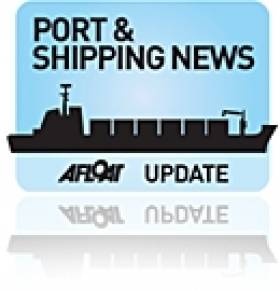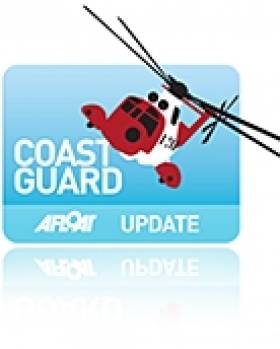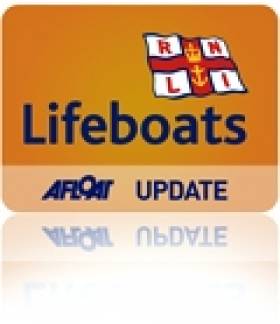Displaying items by tag: Belfast Lough
Belfast Riverside Development Gets Approval
#BELFAST LOUGH - Major development plans for the land adjacent to the Odyssey complex on the waterfront in Belfast have been approved, as BBC News reports.
The Odyssey Quays scheme comprises two hotels; multi-storey car parking; retail space; cafés, restaurants and bars; and residential blocks with 800 apartments; to be located next to the site of the Odyssey Arena and the W5 Science Centre on the River Lagan feeding into Belfast Lough.
Main features of the proposal, as submitted by the Odyssey Trust, include a residential riverfront tower, a new civic plaza in front of the Odyssey Arena and a redeveloped promenade along the Lagan.
BBC News has more on the story HERE.
Patrol Ship Purchased, Dublin Dry-Dockings, Belfast Port Masterplan, IMDO Launch Report, Naval and Cruiseship News
#PORTS & SHIPPING REVIEW - Over the last fortnight Jehan Ashmore has reported from the shipping scene where the Royal Navy's fishery patrol vessel HMS Mersey docked in Dublin Port, having been purchased from her shipbuilder-owners as part of a £39m deal.
One of the largest vessels of the Arklow Shipping Ltd fleet, Arklow Manor of 9,682grt/14,008dwt arrived in Dublin Port to enter the dry-dock facility, one of her sisters had also used the dry-dock in Alexandra Basin earlier this year.
P&O Cruises Adonia, became the final cruise caller to Dublin Port this year, having spent a day at sea after departing Cobh Cruise Terminal the previous day. She led the fleet during the 175th anniversary 'Grand Event' which formed one of the lectures during last month's London Ship Show.
A Masterplan setting out the future for the next 20-30 years for Belfast Harbour was launched, those interested in making comments on the plans are asked to respond by 7 December.
The Irish Maritime Development Office (IMDO) released a report of the nine semi-state port's financial statements for the year end 2011. A key finding is that after a combined growth of 3% in turnover in 2010, the ports recorded a fall in turnover of 3% in 2011 with turnover falling to €120m.
Naval Service OPV L.E. Emer (P21) detained an Irish fishing vessel off the south-east coast over alleged breaches of fishing regulations and was escorted to Cork and handed over to the Gardai.
In 2013 Cruise & Maritime Voyages are to charter Discovery (1971/20,216grt) for the UK cruising season. She is scheduled to make her debut 'Irish' port of call to Dublin Port in April, which will also mark the start of the cruise season to the capital.
Titanic Plan Set to Go On Display
#TITANIC - The Irish Times reports that a hand-drawn plan of the Titanic will go on display at the visitor's centre dedicated to the tragic vessel in Belfast.
The enormous 10-metre drawing was used during an inquiry into the Titanic's sinking in 1912, and was donated anonymously to Titanic Belfast after selling at auction this summer for more than £200,000 (€250,000).
“I would say that it transcends economic value, given its role in Titanic history," said paper conservator Sean Madden, who worked on the project in his Lurgan studio. "Restoring and preparing the plan for display at Titanic Belfast has been an honour.”
The plan was shown at Belfast City Hall in April during the Titanic centenary events, and is set to be installed in the Aftermath Gallery at Titanic Belfast on the shores of Belfast Lough shortly.
The Irish Times has more on the story HERE.
MIAB Report into Belfast Lough Collision Finds Fault on Both Sides
#BELFAST LOUGH - Inappropriate actions by the bridge teams of two vessels contributed to their collision in Belfast Lough earlier this year, according to the official report into the incident by the UK's Marine Accident Investigation Branch (MIAB).
BBC News reports on the MIAB's findings in its investigation into the collision of the container ship Union Moon and passenger ferry Stena Feronia on 7 March last, which resulted in substantial damage to both vessels.
The Stena Feronia, which was heading into port en route from Birkenhead, made contact with the Union Moon near the Fairway Buoy about 1km from the shore between Carrickfergus and Helen's Bay.
The report found that the Union Moon's captain made an inappropriate course alteration on leaving port while under the influence of alcohol which put it in the direction of the inbound ferry.
The captain of the Union Moon, 55-year-old Miroslaw Pozniak, was subsequently arrested and charged with 'excess alcohol by the master of a ship', and later sentenced to a year's imprisonment.
However, the MIAB also determined that the decision by the master of the Stena Feronia to leave his bridge "at a time when his ship was effectively under pilotage and approaching the harbour limit of Belfast, with a converging outbound vessel, was unwise".
In addition, there was a delay on the part of the ferry's pilotage exemption certificate (PEC) holder in taking corrective action due to a lack of "precautionary thought" and "appreciation of the limited time available", while sub-standard VHF communications on the Stena Feronia were also called into question.
Meanwhile, the MIAB report added that they was a lack of clear guidance regarding traffic flow around the Fairway Buoy.
The incident was the second involving excess alcohol by a ship's master in UK waters in six months, following the beaching of the container vessel Karin Schepers on the Cornish coast in August 2011.
The complete MAIB report into the incident is available HERE.
Titanic Quarter Developer Makes a Loss
#TITANIC - Titanic Island, the company at the head of the consortium developing Belfast's Titanic Quarter, made a pre-tax loss of £20 million (€25 million) in 2011, as BBC News reports.
Much of this has been attributed to a one-off payment of £13 million (€16.25 million) to the charitable trust that owns the new Titanic Belfast visitor centre on the shores of Belfast Lough.
The company's directors described the opening of the tourism hot-spot as the "tipping point" for the development and that "the pieces are in place" for the Titanic Quarter to become one of Ireland's most important commercial hubs.
Meanwhile, Titanic Island is in discussions with Ulster Bank about restructuring its loan support, which the firm's auditors say is essential if the development is to continue.
BBC News has more on the story HERE.
Titanic Launch Ticket Tells The Story Of Its Legacy
#TITANIC - In the latest edition of his history of Ireland in 100 objects in The Irish Times, Fintan O'Toole examines the legacy of an admission ticket to the launch of the Titanic in Belfast on 31 May 1911.
On that day, he writes, "a huge crowd gathered at the Harland and Woolf shipyard at Queen's Island in Belfast Lough for the launch of the great transatlantic liner Titanic. Among them were many of the workers who had built it. This admission ticket belonged to David Moneypenny, a ship's painter who worked on the first-class quarters."
He adds: "For him, for his colleagues, for Belfast and Protestant Ulster, this was a moment of extraordinary accomplishment. Titanic was at the leading edge of 20th century technology."
O'Toole positions the Titanic as a symbol of Belfast's remarkable growth in the late 19th century to become Ireland's largest and most productive city, largely built upon the "kind of globally significant industry" that Dublin and southern Ireland were sorely lacking.
But while marking the gulf of separation between these two Irelands - the largely Protestant industrial powerhouse and the Catholic land "of romantic peasants" - Titanic also represented two very different versions of Ireland in popular culture: one of the hundreds of post-Famine emigrants who died when the ship sank on 15 April 1912, and that of the start of what O'Toole describes as "an almost apocalyptic sense of threat" to the Ulster Protestant identity, the reverberations of which are still felt today.
The Irish Times has more on the story HERE.
Belfast Harbour Notice: Changes to Navigation and Traffic Aids
#BELFAST HARBOUR - Mariners using Belfast Harbour are advised of a number of changes made to buoys placed in Belfast Lough to aid in navigation and traffic management.
The existing Fairway Buoy has been moved east northeast (ENE) to a new position, while four new buoys have been added - two at the main approach to the Port of Belfast, and two further out in the lough at Kilroot and Helen's Bay.
Vessels heading into the Port of Belfast are to pass north of the repositioned Fairway Buoy, while outward vessels must now pass south of the buoy, both reporting to Belfast Harbour Radio on VHF Channel 12.
Moreover, all vessels arriving to and departing from Belfast Harbour, when proceeding to or from anchorages or other berths within Belfast Lough, are requested to make contact with Belfast Harbour Radio to confirm their passage plans whether inbound (15 minutes from the Fairway), outbound (on passing Beacon No 12) or on heaving anchor.
Full details of co-ordinates of the new buoy placements are included in Belfast Harbour Notice No 20 of 2012, a PDF of which is available to read or download HERE.
Largest Ever NI Maritime Exercise Takes Place on Belfast Lough
#coastguard – Exercise Diamond, the largest maritime exercise ever held in Northern Ireland, has taken place today within Belfast Lough. The exercise has tested the response by those involved in maritime search, rescue and recovery to a major maritime incident.
The exercise began with the following scenario:
There had been a 'collision', caused by an electrical fault, between the passenger vessel, 'MV Lough Explorer' which had 120 people on board and a commercial roll on roll off ferry, which had 50 passengers and 23 crew on board. The 'collision' had caused damage to the bow of the Lough Explorer and the hull of the ferry. The Lough Explorer was sinking rapidly and the master of the ship had broadcast a mayday message and given the order to abandon the vessel.
The master of the ferry reported that he could see liferafts from the Lough Explorer and people in the water. His own vessel had begun to list and three trailers on the deck had rolled over, trapping two people. Another trailer had caught fire. The master had requested help with fire fighting, to free the trapped people and to evacuate 50 people from the vessel. A major incident had been declared.
As part of the live exercise, Belfast Coastguard coordinated an air and sea search and rescue operation involving the following:
Bangor RNLI inshore lifeboat
Donaghadee RNLI all weather lifeboat
Larne RNLI all weather lifeboat
Portpatrick RNLI all weather lifeboat
Belfast Harbour Pilot Boat
Rescue helicopter ICN (Irish Coastguard Sikorsky S92N – Dublin)
Rescue helicopter 177 (Royal Navy Sea King – Prestwick)
The lifeboats searched for the 100 people (simulated by numbered oranges and dummies) who were in the water following the sinking of the Lough Explorer. Twenty people (played by RNLI crew and MOD personnel) were in liferafts and were recovered from the water by the lifeboats. By the end of the exercise 115 'people' (91 oranges, four dummies and all of the personnel) had been landed ashore at Bangor. Coastguard rescue officers, Police Service of Northern Ireland (PSNI) and ambulance personnel then brought them ashore before they were transported to a casualty reception centre, which was set up at Bangor Leisure Centre by North Down Borough Council, Southeastern Health Trust and PSNI.
The rescue helicopters evacuated 30 people from the ship and airlifted them to a landing site at Newtownards airfield. They were met there by the Coastguard Rescue Officers, who took them to the Casualty Reception Centre which had been set up at Londonderry Park by Ards Borough Council, Southeastern Health Trust and PSNI. The helicopters also airlifted specialist rescue teams from the Northern Ireland Fire and Rescue Service and Northern Ireland Ambulance Service to the ferry, to assist with the emergency onboard.
Sue Todd, The Maritime and Coastguard Agency's Coastal Safety Manager for Scotland and Northern Ireland says:
"Today we have shown that Northern Ireland has all of the resources and planning in place to respond, should a major maritime incident arise. Of course, there will be lessons learned and all of the agencies involved will discuss how we can improve. 365 people have taken part in Exercise Diamond today and I would like to thank them all for their willingness and enthusiasm in playing their roles. I would also like to thank Stena Line for providing the ferry and Survitec for providing vital specialist equipment"
Diane Poole, Head of PR and Communications at Stena Line said: "Stena Line works hard on a daily basis to maintain its excellent safety record. Comprehensive exercises such as Exercise Diamond provide invaluable opportunities for us to put our major incident procedures and planning into operation to ensure that they are more than capable of coping with a major incident. In addition, the exercise will also give us a great opportunity to deploy our procedures in consort with a range of emergency and regulatory organisations. This will help all parties in the future in the unlikely event of an emergency of this nature occurring."
Jennifer Williams of Survitec Group said: "The Survitec Group is proud to be part of such an important maritime exercise. We hope that moving forward this will strengthen the emergency search, rescue and recovery procedures we already have in place in Northern Ireland."
Record Year for Cruise Visits in Belfast
#BELFAST LOUGH - Belfast may no longer be building ships but it's certainly attracting them as 2012 marks a record year for luxury cruise ship numbers, according to BBC News.
Nearly 80,000 passengers and crew from 111 different countries have come through the city's port via 43 cruise liners since the start of this year's cruise season - and more than 50 are expected to sail into Belfast Lough in 2013.
Northern Ireland's tourism hotspots are the big attraction for most, from the world-renowned Giant's Causeway to the new Titanic Belfast visitor centre - but curiosity is also a big driver.
"A lot of people are curious about Belfast and Northern Ireland," said Gerry Lennon of the Belfast Visitor and Convention Bureau. "The political stability has given us that ability to go to the market-place and now say 'look what we have to offer'."
BBC News has much more on the story HERE.
Belfast Lough Hosts Major Maritime Exercise This Weekend
#LIFEBOATS - The Larne Times reports that Larne RNLI will be involved in a major maritime exercise in Belfast Lough this Sunday 23 September.
As many as 365 people will take part in 'Exercise Diamond', which involves vessels from the UK coastguard along with lifeboats, helicopters, search and rescue co-ordinators and other emergency services.
The exercise is intended to "test the major incident plans for all the organisations that would be involved should a major maritime incident happen in Northern Ireland," said controller Steve Carson.







































































